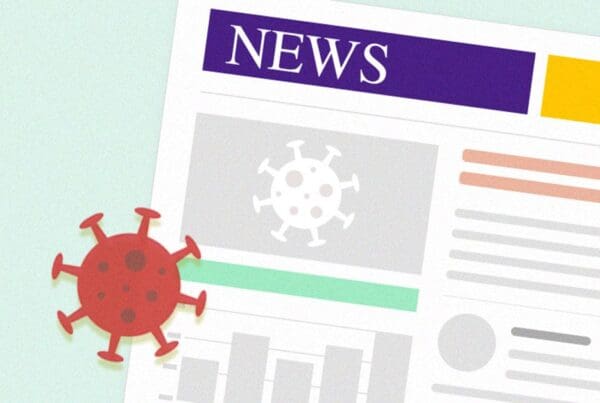QUICK READ:
- Based on current levels of COVID-19 hospitalizations and deaths, and subject to some exceptions, masking will no longer be required in all public and clinical settings as of Monday, July 10.
- Healthcare workers are required to wear a mask in higher risk spaces and with specific patient populations as well as when requested to by a patient, or when a patient is wearing one.
- The masking policy is subject to change if there are signs of increased COVID-19 or other respiratory illness activity in the community.
For more than three years, the UW Medicine community has taken unprecedented measures to keep our patients and our colleagues safe. Although COVID-19 continues to circulate and will likely surge again this fall or winter, current levels have dropped significantly, including hospitalizations and deaths due to COVID-19 according to King County and CDC data.
As a result, UW Medicine is updating our masking policy, effective July 10, 2023. Masking will continue to be strongly recommended in clinical areas but will no longer be required in all public and clinical settings with the following exceptions:
- Healthcare workers are required to use appropriate transmission-based precautions, including masks and respirators as indicated, for patients with confirmed COVID-19, COVID-like signs and symptoms, and other respiratory viral infections. Patients with signs or symptoms of a viral respiratory illness are also required to wear a mask if able to wear one based on medical status.
- Healthcare workers are required to wear a mask in higher risk spaces (see below), when caring for oncology patients receiving active chemotherapy or radiation, and during inpatient care of solid organ and bone marrow transplant recipients. These patients should wear a mask if medically able. Visitors in these areas are expected to wear a mask.
Here are additional details about the updated policy:
- Higher-Risk Spaces include infusion areas with shared spaces and Emergency Department waiting rooms.
- Ambulatory clinics that would like to continue to require healthcare worker and patient masking are empowered to do so and should use appropriate signage.
- Masking requirement signs are available on the UW Medicine COVID-19 site.
- Healthcare workers with viral respiratory symptoms should remain at home until symptoms significantly improve. If cleared to return to work per Employee Health guidelines, employees must mask in all settings until symptoms resolve. Note: if recovering from COVID-19, a respirator must be worn per Employee Health policy.
- If a COVID-19 outbreak occurs on a unit or department, all healthcare workers must wear a respirator as determined by Employee Health/Infection Prevention and Control.
- Healthcare workers are required to wear a mask if requested to do so by a patient or their caregivers/family. Please use this sign to identify those patients.
- Healthcare workers are required to wear a mask if a patient is masked.
- Healthcare workers with high-risk exposures to COVID-19 are required to wear a mask for 10 days from their exposure.
While masking is no longer required in all clinical spaces, it is still strongly encouraged, especially during patient-facing encounters. Please note that without a mask, healthcare workers may be placing themselves at greater risk of exposure to COVID-19 and other respiratory viruses in the workplace. Outside of outbreaks, routine contact tracing for COVID-19 exposures will be discontinued.
This policy is subject to change when there are signs of increased COVID-19 or other respiratory viruses (for example, influenza) circulating or if multiple outbreaks are detected. It is also very likely that we will return to required masking in patient care spaces during the respiratory virus season (usually from October to April).
The Infection Prevention teams are working to determine the thresholds that we will use to make these changes. Wearing a mask or respirator has proven to be an effective tool to prevent transmission of not only COVID-19 but also other respiratory infections in clinics, emergency departments and inpatient units. We should all be ready to make that transition when needed.
It has been a long and challenging time for all of us. Thank you for everything you have done and are doing to keep everyone — yourself, patients, colleagues and visitors — as safe as possible. Please contact your local Employee Health Clinic with questions.
Sincerely,
UW Medicine Employee Health and Infection Prevention & Control Teams
